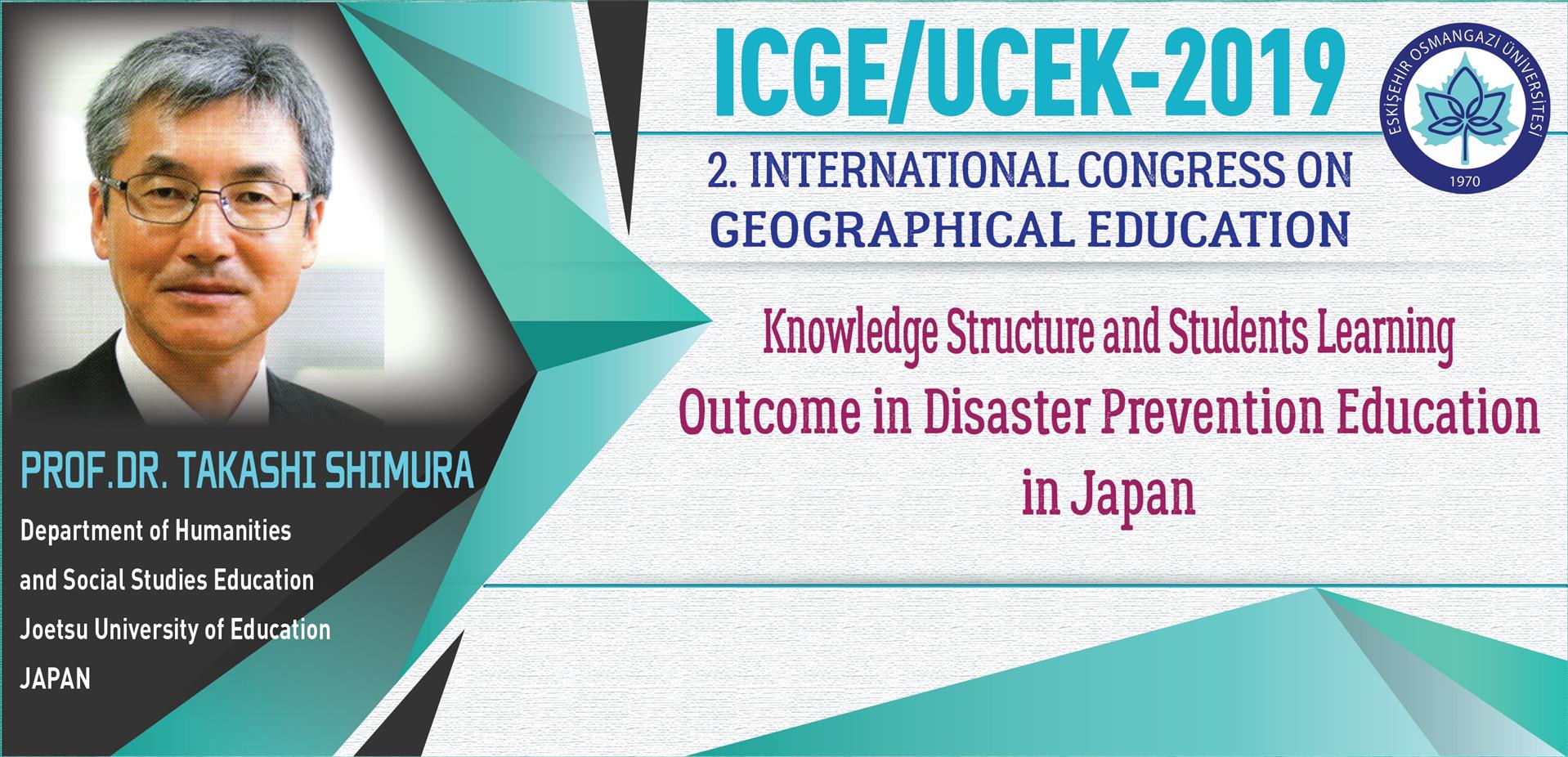
Invited Speaker: Prof. Dr. Takashi SHIMURA
Title of the Speech: Knowledge Structure and Students Learning Outcome in Disaster Prevention Education in Japan
Abstract of the Speech: In order to respond appropriately to disasters, it is necessary to act proactively with correct recognition about disasters that may cause damage. The recognition content that students learn and acquire in disaster prevention education in schools can be almost divided into the following two types.
One is the recognition type of what kind of hazard/disaster risk is in the place where students themselves live. The other is recognition type of how/why disasters occur. The former is a recognition that consists of fact knowledge about the place where students live and know well. On the other hand, the latter is a recognition that consists of concept knowledge. This conceptual recognition is general or structural knowledge that can be applied not only to the places where the student lives and knows, but also to various places.
Considering the structure of disaster prevention learning, fact knowledge corresponds to the cause factors of disaster in the place. Concept knowledge, on the other hand, is a mechanism that links cause factors and trigger factors and turns hazards into disasters. Therefore, we hypothesized that in disaster learning, it is necessary to acquire both fact knowledge and concept knowledge in a well-balanced way, in order for students to act independently and appropriately. This presentation reports the examination of this assumption based on our research lesson practice about flood damage in Japanese junior high school.
Biography of the Speaker:
Dr. Takashi SHIMURA is a professor in the Social Studies Department at Joetsu University of Education. He previously taught at senior high school level for 17 years, and then joined the academic faculty at the University in 2002. His major fields of research include comparative curriculum study and map learning. In 2015, he co-edited Geography Education in Japan with his colleagues, published by Springer.

